14. Fontana di Trevi (La Dolce Vita – Federico Fellini, 1960)
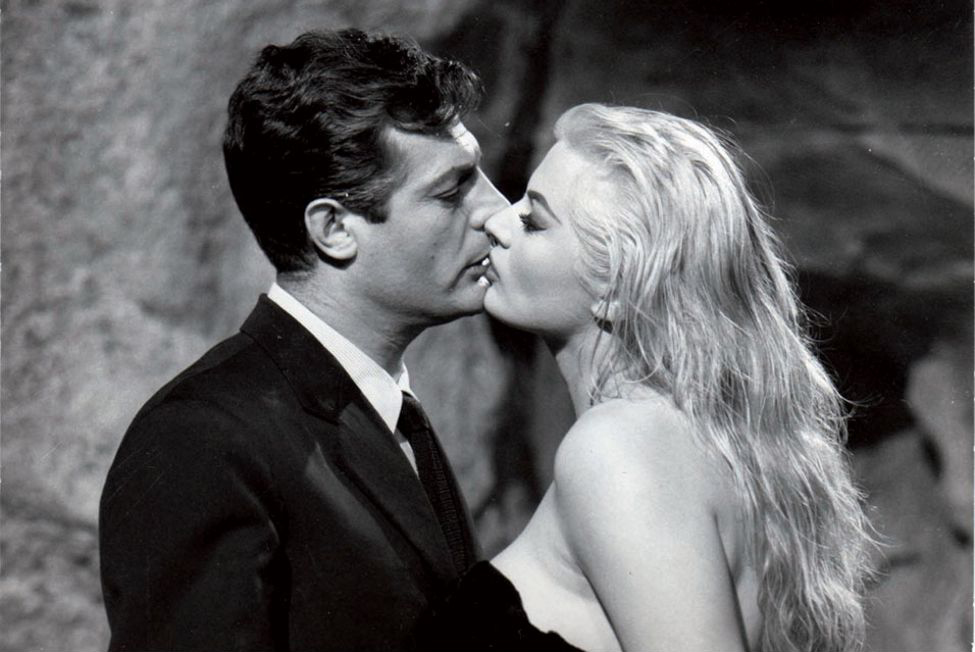
Federico Fellini and Marcello Mastroianni in the purest artistic tune. The italian master synthesized in La Dolce Vita all his cinematographic resourcefulness, reaching the peak of his art. Here, we are presented to Marcello, a journalist that lives among the aristocrats and celebrities of Rome in the 60’s. Between millionaire, photographers, cheatings and gossiping, the journalist ends up in an existential crisis, not been able to understand the meaning of his life. Walking through his city and going to fancy parties, Marcello starts striving for a meaning for his life.
On the most famous sequence in the movie, Marcello and Sylvia, a Hollywood star, walk in the alleys and streets of Rome. For just a glimpse, they separate in the streets. Then, the actress sees on of the most gracious monuments of Rome: the Fontana di Trevi.
There, Sylvia bathes herself at the artificial waterfall, unaware of Marcello’s vouyerist presence. She invites him to join her, and he hesitates, but ends up giving in to her desires. Appalled with such beauty of the moment, he lets himself go, and, finally gets his epiphany.
On this scene the use of point of view regarding Marcello and the object of his desire, Sylvia, is very strong: his gaze and her soft and sensual gestures gain an extraordinary power. The camera, that only does slight movements, preserves this magical moment. Approaching Sylvia, he finds himself astounded by such beauty; he runs his hands over her face, making his worship clear.
13. The Devil (Under the Sun of Satan – Maurice Pialat, 1987)
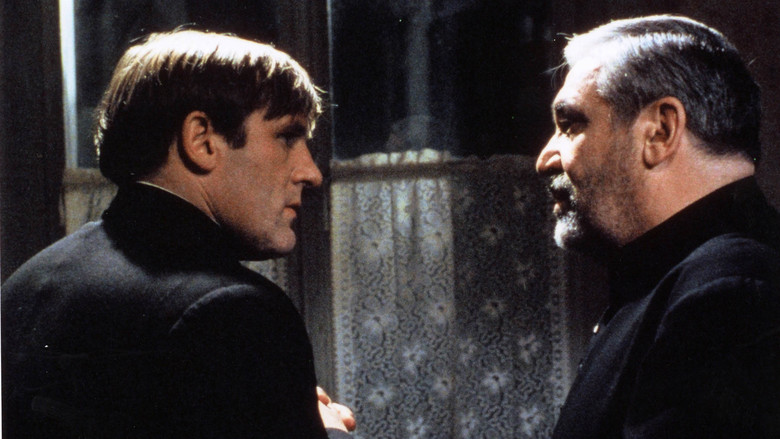
The most controversial movie of the list. The proof: booed in his debut in Cannes, Under the sun of Satan was the winner of the main award of the festival. The movie is inspired by the same titled novel, written by Georges Bernanos.
Here, the protagonist is priest Donissan, abbot in a small village parish. After Mouchette, a young girl, confesses murder, the priest establishes a strange and metaphysical relationship with her. Also, tempted by the personification of Satan, Donissan tests his belief and faith.
The scene here described is the encounter between the priest and the Devil. Walking through fields searching for a villa, Donissan is approached by a supposedly common man, that was on the same path as the priest. They chat, and the priest starts getting more tired as they walk. Then, the man reveals that he is Satan.
Heren perfection manifests itself on the dialogs, always testing Donissan’s faith. The approach between him and the Devil is physical: at first, they are apart, but after, they end up lying side to side, when the Devil kisses Donissan.
Like that, Pialat is capable of approaching the two biggest antagonists of the plot: God and Satan, the priest and the Devil himself. After the kiss, Dionissan, shocked, reacts negatively and curses Satan. As always, the proximity between God and Devil scares the ones that believe in the intelligent designer.
12. Through the mirror (Orpheus – Jean Cocteau, 1950)
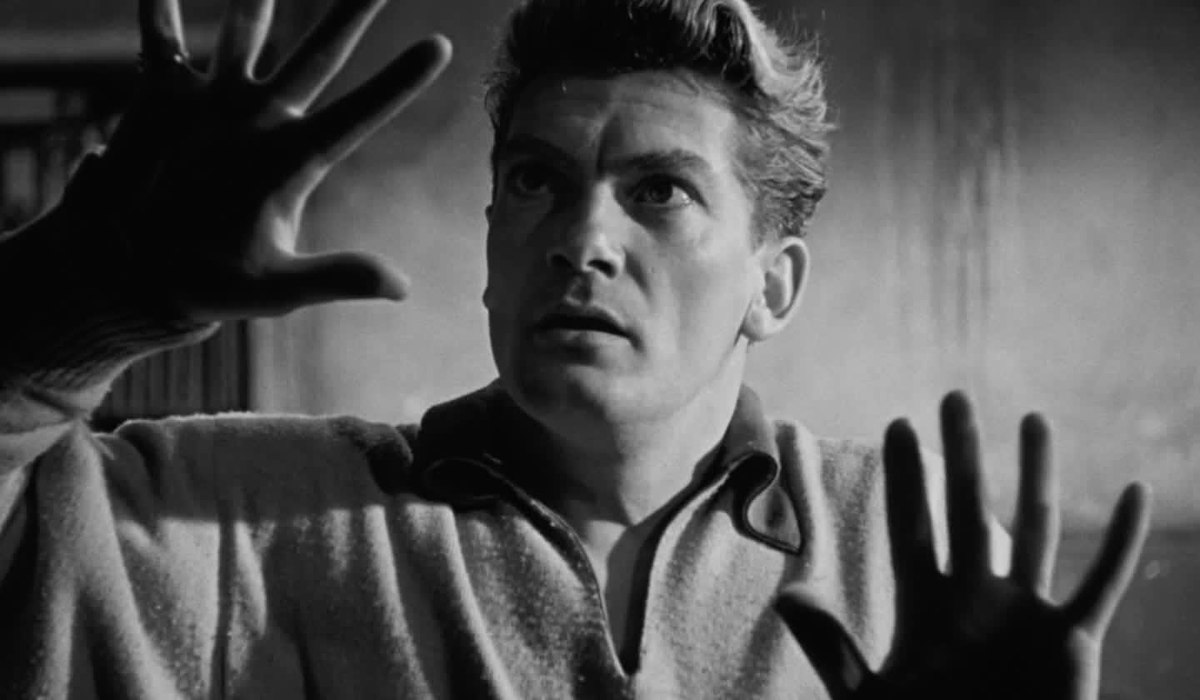
Orpheus it’s a manifest of the pure cinema of Jean Cocteau. Filled with surrealism and magic, he does an allegory regarding the greek myth of Orpheus. In the movie, a famous poet, called Orpheus, is in love with a mysterious woman that turns out to be the personification of death. She, out of jealousy, kidnaps Eurydice, Orpheus wife, and takes her to the underworld. Then, the poet, along with Cegeste, a death’s servant, goes to the underworld in a search for his wife and his lover.
Going to the underworld, Orpheus and Cegeste have to go through a mirror, a travel between life and death. In his second attempt, he is able to go through the mirror, since in the first one he wasn’t psychologically able to do it. Into the underworld, Orpheus gets in a place where time and space are relative and different than in the world of the living. He and Cegeste wander – Orpheus with a great difficulty to walk – until the find the court of the dead.
The cinematographic language in this sequence is splitted in two defined parts: before and after the mirror. On the first part, many shots compose the scene, with a not intrusive editing, that prioritizes the continuity and naturality of the movement.
After, everything changes: the realism is left behind and it starts getting more magical. Orpheus and Cegeste go through ruins in the underworld; while Cegeste floats easily, Orpheus suffers to change his living essence for death. It is clear the clash between life and death, creating the analogy that the passing to death is heavy and turbulent; not a simple change of matter.
11. Birth (Window Water Baby Moving – Stan Brakhage, 1959)
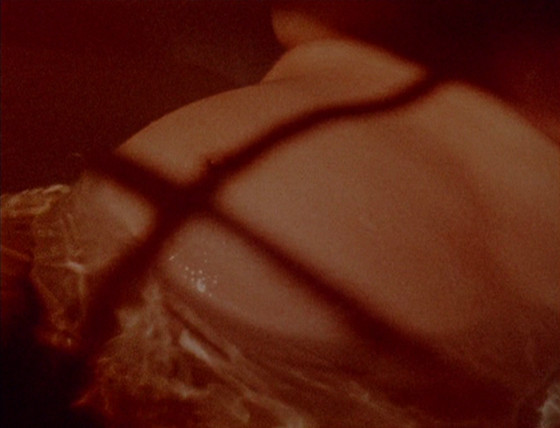
Never in history a birth was so symbolic and poetic as in Window Water baby moving. While his wife was pregnant, the master of experimental cinema Stan Brakhage documents the last days of the pregnancy. The nine minutes long short movie, does not care for time and space, disconsidering continuity and fluidity. Highlighting the lirism and poetry, Brakhage doesn’t only films a birth, but an about life.
In the sequence of the birth itself, Brakhage uses intrusive shots of his wife’s contractions, vaginal dilatations and, at last, the child coming to life. The filmmaker remembers the moments of anguish before the birth, juxtaposing them to his wife’s agony while she gives birth.
The astonishing images done in the bathtub have a incredible going through, which forms a metaphor to the act of giving birth. Opposing images of fulfilment and anxiety of paternity with the anguishing pain of labor, Brakhage develops a beautiful dialectic about the pleasures and difficulties of being a father. Without any sound intervention, the process of labor is raw, without any external intermediaries.
10. Frank Sinatra’s fan (Master, a Building in Copacabana – Eduardo Coutinho, 2002)

The brazilian Eduardo Coutinho was shaped in the news media of his country. In that way, he was taught how to develop singular techniques to interview people. In his masterpiece, Twenty years later, it is remarkable his ability to get sensible and personal information out of people is enviable.
In Master, a Building in Copacabana, Coutinho goes into a big building in Copacabana, inhabited by people with poor social conditions. There, he gets to know thrilling and sad life stories.
In this scene, Coutinho interviews a lonely man that lives purely for his most nostalgic memory: he once sang with Frank Sinatra. His name is Mr. Henrique, and in his lowly apartment he has a vinyl player, some images of catholic saints and a small wooden table.
In a given moment, Coutinho asks if the man remembers any striking moment of his idol, the legendary Frank Sinatra. Then, Henrique puts in the vinyl player one of his greatest successes: My way. Henrique sings along the whole song.
Here, Coutinho shows the self-contained side of his personality, leaving the interviewee free to show everything he wants. Mr Henrique starts singing all the sogn in a restrained manner; when the chorus comes, he frees all his emotion, screaming for attention and dedication to his beautiful memory.
Euphoric, Henrique cries a little. While he weeps, Coutinho approaches him, capturing the essence of the moment. Singing the song, Henrique says that, despite his regrets, everything was done in his own way.
9. Ending (The Sacrifice – Andrei Tarkovsky, 1986)
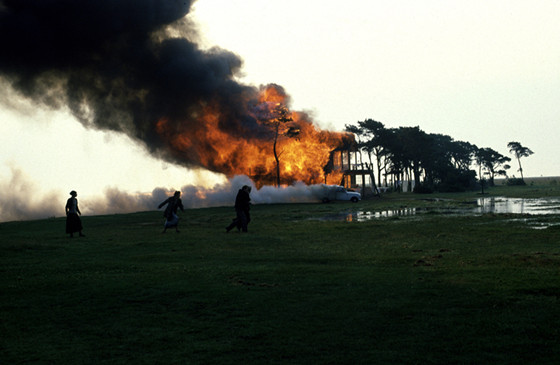
The cinematographic life of Andrei Tarkovsky couldn’t have a different ending: a masterpiece. Winner of multiple awards, The Sacrifice was a success in festivals all around Europe, including Cannes and Venice. Isolated in a vacation house, a rich swedish family celebrates the birthday of the patriarch, Alexander. But the perfect established order is broken when the Third World War is announced in television. Then, Alexander promises to God he would sacrifice everything that he loves most if he changes humanity’s destiny.
In the ending, after making a pact to change the world’s future, Alexander, already clinically insane, takes his family out of his house and burns it down. When his family finds out about the fire, they search for Alexander, that declares guilty for the catastrophe. Suddenly, an ambulance appears to take the patriarch, who is completely shocked that he had made a pact with a witch. Then she appears, riding a bicycle, appreciating the confusion caused by the burning house.
Amazingly, such a complex scene was shot in an only take, that, despite being a establishment shot, has a perfect and astonishing movement. Without any editing, Tarkovsky is able to keep the viewer informed of all the events on the scene.
From the burning house to the ambulance movements, everything is meticulously captured by the filmmaker. The aesthetic beauty of the scene is the complete opposite of what happens with the characters in the scene: the complete detachment of reason and sanity.
8. Travis and Jane (Paris, Texas – Wim Wenders, 1984)
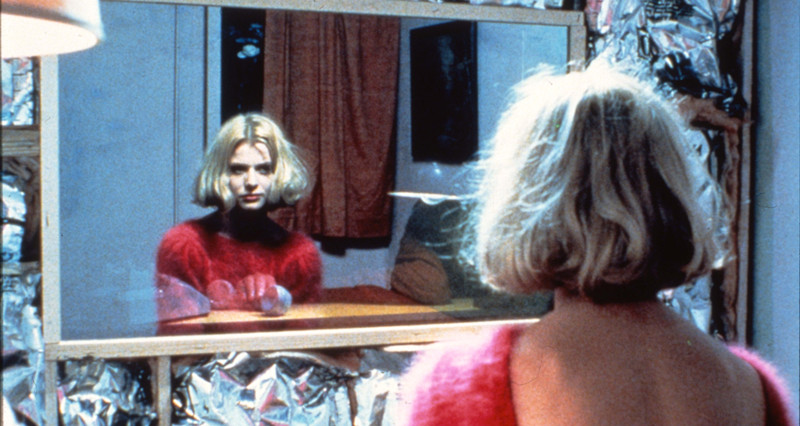
Paris, Texas was, perhaps, the biggest commercial and critics success of the reputed german director Wim Wenders. Shot in the United States of America and starred by Harry Dean Stanton and Nastassja Kinski, the movie was a phenomenon, being awarded with the Golden Palm in Cannes.
The movie is about the yet unknown Travis, that suffers with amnesia. He keeps wandering, having no idea who he is, until a man is able to reach his brother, Walt, who takes him back to Los Angeles. There, Travis meets again his son and, in a search for his wife, tries to rebuild his family.
The scene highlighted here is the is the meeting between Tavis and Jane, his wife. Entering in a booth, the protagonist finds out his wife became a scopophile stripper: she talks to her clients without seeing them directly. Travis begins a conversation in which Travis makes Jane tell about her past and, without realising, she tells about her lost son and her ex-husband. After a few times seeing each other, the recognize one another and Travis convinces Jane to stop stripping and go back to her life with their son.
Here, what is very noticeable is the Travis anguish regarding his wife. She, not being aware of who he is, treat him as a unknown client; he, moved, tries reconnecting with Jane. The interesting aspect of this scene is the brilliant dynamics between the voyeur and the observed.
The two glances, at the same time that are in different shots, seem to be emotionally close. Their glances communicate more to the spectator than the physical contact; when the viewer sees Travis point of view, his emotions can be felt as well, making the scene reach a synaesthetic level. Meanwhile, Jane, unaware that he is her husband, has a unbiased look into the situation, making the viewer expectant to when she is going to recognize that he is her husband.